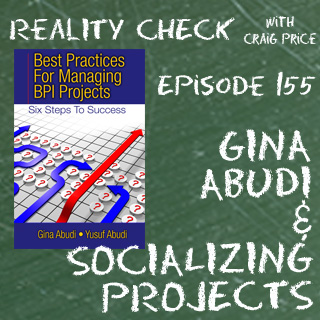Ground rules enable for consistency among remote employees and are particularly important when employees are in different time zones and must collaborate or exchange information regularly. As a best practice, managers should collaborate with remote employees to develop ground rules. Remote employees who participate in developing ground rules are more likely to adopt those ground rules and commit to them.
A Client Story – Developing Ground Rules with Remote Employees
My client, a recently promoted manager of a remote group of employees, was getting her group together for an off-site meeting. The team members were all remote, everyone working from a home office. They would only be getting together once a year for an off-site planning session; which would occur at the beginning of each fiscal year. The fiscal year was coming up and the manager wanted the group to focus on developing ground rules. While the team members had all worked within the organization for a number of years, this was the first time they had all come together as a team.
The Team’s Off-Site – Developing Group Rules
During her team’s off-site, I facilitated a session on ground rules for the group. By facilitating the session, the manager was able to take part in the discussion around ground rules. The session started with discussing the importance of ground rules and the value of having them for all employees. Each employee was asked to share one ground rule that was important to him/her. (Each member was tasked with thinking of a ground rule for consideration by the whole time prior to the meeting.) There were eight employees, plus the manager.
Ground Rules Considered
The nine ground rules (one per team member plus the manager) were:
- Use of the collaboration portal
- A regular schedule of team meetings with monthly alternating times to accommodate the different time zones
- Availability hours for contacting team members
- Processes for resolving conflicts and solving problems
- Communication protocols
- Treat each other with respect
- Each team member speaks for him/herself only
- Active listening and ask clarifying questions – disagreement is ok but be considerate of differing opinions
- Decisions made by consensus
Additional ground rules brainstormed included:
- Spend time getting to know each other personally
- No attacking ideas
- When solving issues, focus on the issue, not people
- All meetings will have an agenda and the team will start on time and end on time
- Team members will rotate roles/responsibilities on meetings: facilitator, note taker, time keeper, etc.
- Collaborate to solve problems
- Consistent templates for agendas, meeting minutes
- When on conference calls, don’t interrupt others and say name before speaking
- Recognize ideas of others
- Show up for meetings – be present
- Team members support one another
- Meet all deadlines, especially for work that is shared across the team
- Ask who needs help when there is down time
The team liked all of the ground rules; none were eliminated.
Ground Rules Categorized
Once potential ground rules were brainstormed, the team categorized the ground rules.
|
Category |
Ground rules included in category |
|
Technology |
|
|
Communications |
|
|
Meetings |
|
|
Team/Human Element |
|
|
Processes |
|
Further Developing the Ground Rules
Since they were a smaller team – nine people total, including the manager – they decided to work together on further developing each of the ground rules and putting that information up on the portal. For the purposes of this case study, I’ll share how the group further developed the ground rule around using the portal.
Ground Rule: Use of the Collaboration Portal
The company already used Microsoft SharePoint® so that is the tool to be used for this workgroup. The following components would be included in the portal for the group:
- General discussion board
- General Overview: Best Practices for:
- Naming conventions for files uploaded to SharePoint® site
- Sharing data/information best practices
- Problem Solving section
- Includes problem to be solved and enables for input to solving it from other team members
- A place to ask for help from other team members
- Best Practices section
- Process flow charts for making decisions, solving problems and resolving conflicts
- Communication best practices – when to use what mode or channel of technology
- Project Status section
- Team Directory (photo, name, location, hours of availability, contact information, job role/responsibilities, personal information such as hobbies, pets, etc.)
- Team Meetings section
- Agendas for meetings
- Key roles at meetings – facilitator, note taker, etc.
- Templates for meetings – meeting agenda, meeting minutes, etc.
- Team Section – to include personal items such as vacation photos team members want to share, family photos, pet photos, funny jokes or stories, etc.
In Summary
Ground rules are essential for all employees and teams in the workplace as they enable for consistency. Ground rules are especially important for remote employees who may not get the chance to see each other regularly. Ground rules enable for consistency in how employees interact with each other, share data, and set expectations for communications, supporting each other and for building relationships. Ground rules set the expectation for how the team will behave with each other. Ground rules enable for consistency in managing conflicts, solving problems that arise and making decisions. Ground rules affirm best practices the team will use to ensure they collaborate to meet joint goals and objectives.


